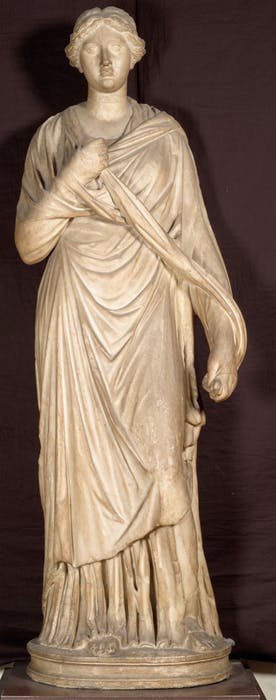“Grande Ercolanese" type female statue
Roman art
This sculpture has undergone a long series of movements: initially kept in the Villa di Pratolino, a complex owned by the Medici to the north of Florence, it appeared between 1776 and 1789 in the Boboli Gardens. Later, the sculpture was perhaps for a period in the Villa di Poggio Imperiale, the grand-ducal residence located immediately to the south of the city of Florence, before coming to the Uffizi in 1870. The head, neck, chest and left hand of the statue are the result of modern restoration. The subject represents a standing woman, wrapped in her cloak (himation) under which she wears a long chiton, and with her right hand brought to her chest. Datable between the 1st and 2nd centuries AD, the work is to be understood as a Roman reworking of a type known as "Grande Ercolanese" because of the place where the first examples were found. It is believed that its archetype can be traced back to a Greek original, datable no later than 320 BC. The sketchy workmanship of the back, not intended for viewing, suggests that this sculpture may have come from a funerary aedicule.
A. Romualdi (a cura di), Studi e restauri. I marmi antichi della Galleria degli Uffizi, II, Firenze, Polistampa, 2007 (con contributi di M. Giachi, C. Pacini, Statua femminile tipo “Piccola Ercolanese”, pp. 122-129; M. Giachi, C. Pacini, Statua femminile tipo “Grande Ercolanese”, pp. 134-139; C. Mancini, Il restauro, pp. 140-143) e bibliografia precedente.
